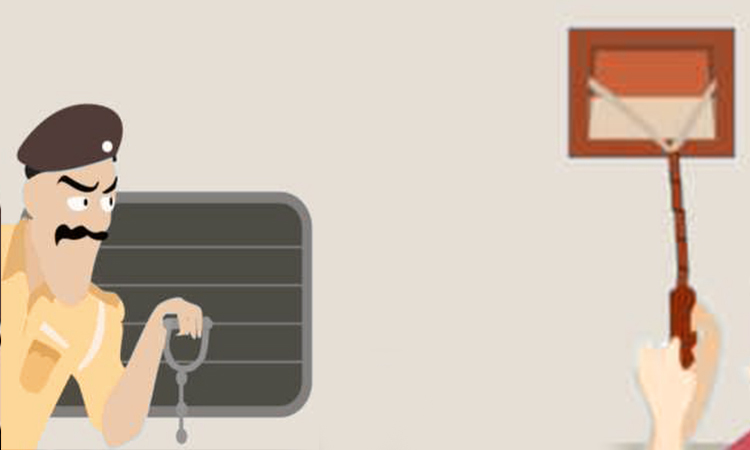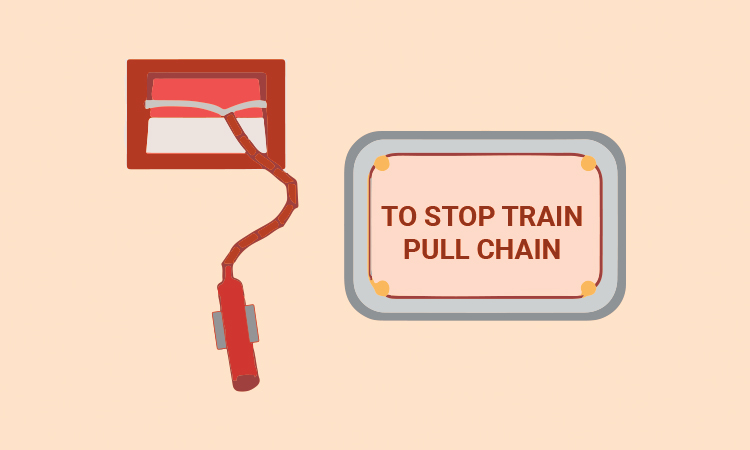During railway travel, emergencies can happen at any time. And you'd give anything to stop the train or raise attention to the situation at such a moment. To stop the train, pull the chain! is the code of practice for train travel situations. Because the guard and loco pilot rooms are located at opposite ends of the train, passengers are unlikely to rush to those rooms for assistance during an emergency. Keeping this in mind, each train coach is fitted with Emergency (or Alarm) chains, which may bring a moving train to a complete stop when pulled.
While every one of you may be familiar with emergency chains, you may not be aware of some facts about chain pulling. We'll try to answer any questions you might have about chain pulling in this blog.
More From Trainman- 5 Places to visit in February in 2022
How does the train stop when somebody pulls the chain?
The train's primary braking pipe is connected to the alarm chains. This braking pipe helps the train travel smoothly by maintaining steady air pressure. The air collected in the brake pipe escapes through a small vent when the emergency chain is pushed. Because of the loss in air pressure, the train slows down. The loco pilot notices the loss in air pressure immediately and begins guiding the train. Because the train travels on tiny lines, it cannot be brought to a complete stop due to the risk of derailment due to imbalance.
NOTE: A train running at a speed of 110 km/hr might stop completely within 3-4 minutes of the chain being pulled.

How many Emergency chains are provided in coaches?
Chains used to be on either side of the coach walls in the past (for ready use by the passengers). However, Indian railways have recently reduced its workforce (due to their misuse). Today, there is a single chain, which is usually found in the middle
Can the loco pilot override the emergency braking system in train?
Yes, but only in limited circumstances may the loco pilot override the emergency brake. Behind the overarching reasoning, there is a bit of history. When dacoits were a serious issue, loco pilots were given explicit orders to override emergency brakes when going through crime-ridden regions. Today, however, the rules have been altered slightly. If a modern loco pilot overrides the emergency braking system of a train, he or she will be held accountable to higher authorities.
How does the RPF know about who pulled the chain?
The RPF personnel arrive at the coach in no time after the alarm chain is pulled. Many people are perplexed as to how this is possible. The train coaches, on the other hand, are equipped with emergency flashers on the side walls. As soon as the emergency chain is pulled, the flashers on the coach (where the chain was pulled) go off. A light on the locomotive pilot's controls begins to blink and buzz until the Guard, Assistant Driver, and RPF staff arrive to the position of the chain tugging and are able to manually reset the chain. The air pressure gradually returns to normal after the chain is restored, and the train is ready to go.

What is the punishment for chain pulling?
Section 141 of the Indian Railways Act makes it illegal to pull a chain without a justifiable justification. According to Section 141 of the Railways Act, if a passenger interferes with the communication between the railway personnel in charge of the train and the passengers without good reason, the individual is guilty. If found guilty, the individual will be sentenced to one year in prison or a fine of up to INR 1,000.
NOTE: If found guilty, the minimum punishment is a fine of INR 500 (for the first offence) or three months in prison (for the second or subsequent offence).
Which is an acceptable condition to pull chain in train?
The emergency chain system was created to assist travellers in times of need. A fellow passenger falls from a moving train, a train fire, a family member left behind at the station, boarding with an older or differently abled person at a station where the stoppage time is insufficient, medical emergencies (when a passenger within the coach requires immediate medical attention), and safety emergencies are all acceptable reasons to pull the chain in a train (events like robbery, dacoit raids, snatch-and-run, etc.).
Other emergency situations can only be considered valid reasons for chain pulling after being evaluated by the appropriate railway authorities.
NOTE: It is illegal to pull the chain to delay the departure of a train for a passenger who has not yet boarded.
Can chain pulling lead to any physical damage on the train?
There will be no damage to the train if the emergency chain is pulled when the train is moving slowly. On the other hand, if the chain is pulled when the train is travelling at peak speed, the train will most likely derail. Furthermore, a train's unexpected halt (due to chain pulling) might set off a chain reaction. It not only delays the train you're on, but it also delays the trains coming up behind you on the same track.
Trainman allows you to book train tickets in just a few clicks from the convenience of your own home. Trainman's online railway reservation is now simple, quick, and safe, so you won't have to wait in long lines for train tickets. You may book trains to any location, class, or train type with us. You may see information like train departure and arrival times as well as the train's PNR status between two selected destinations.

